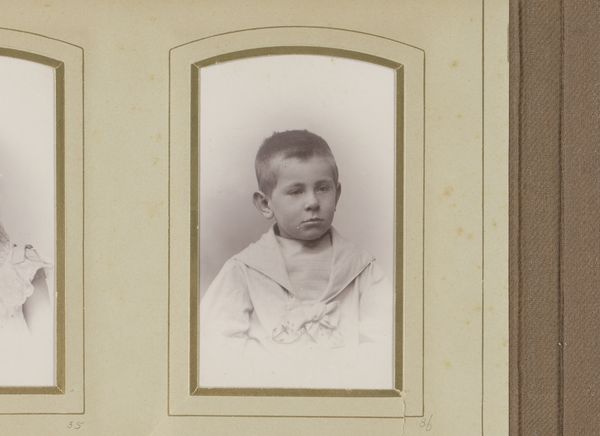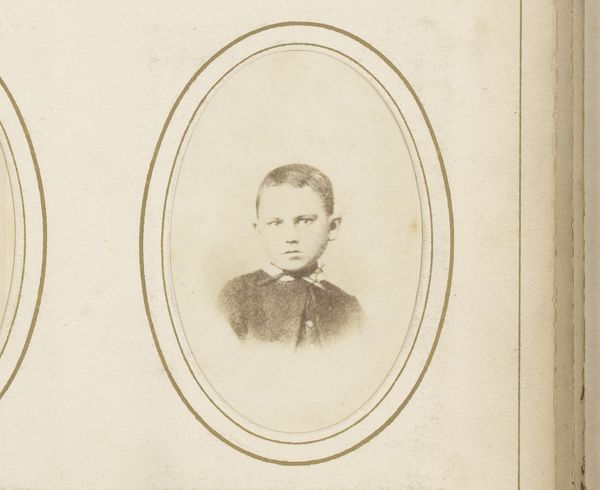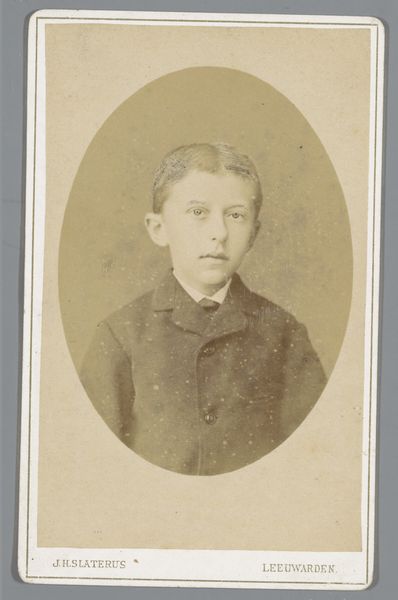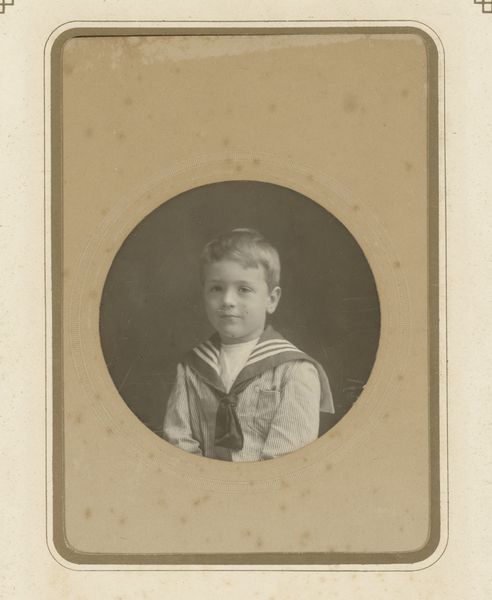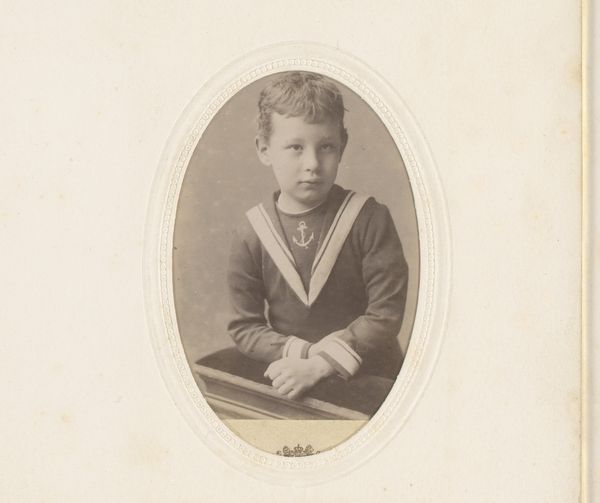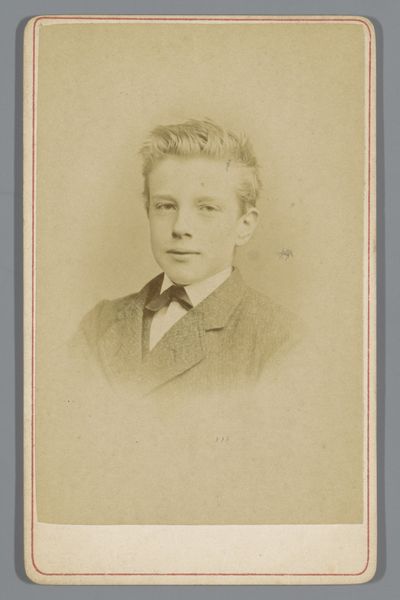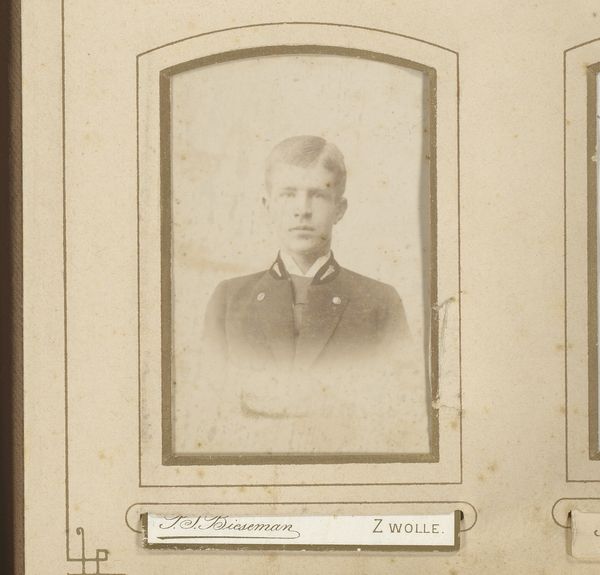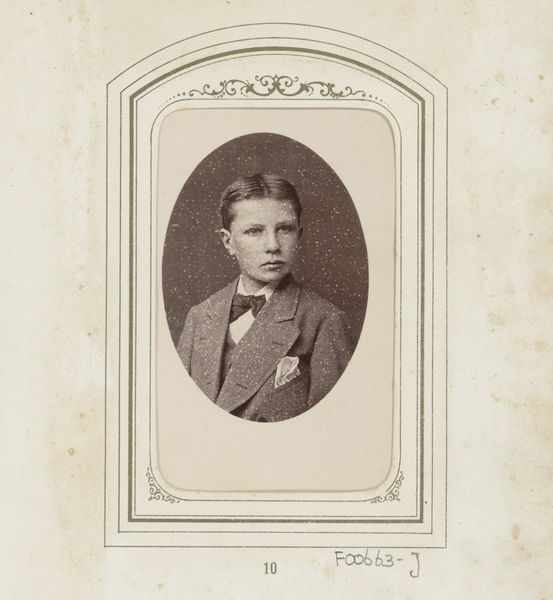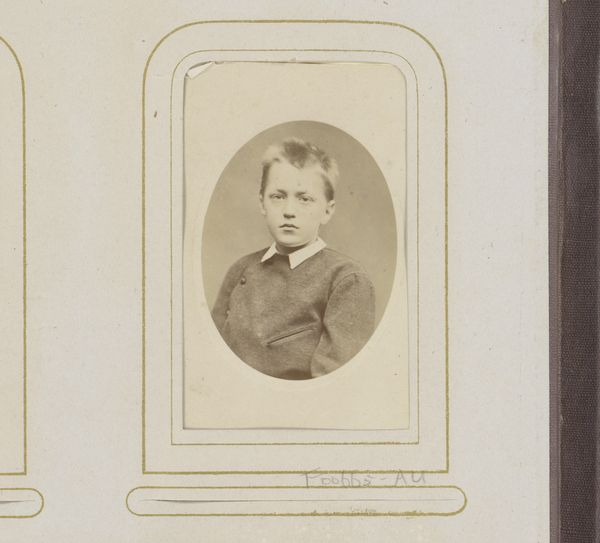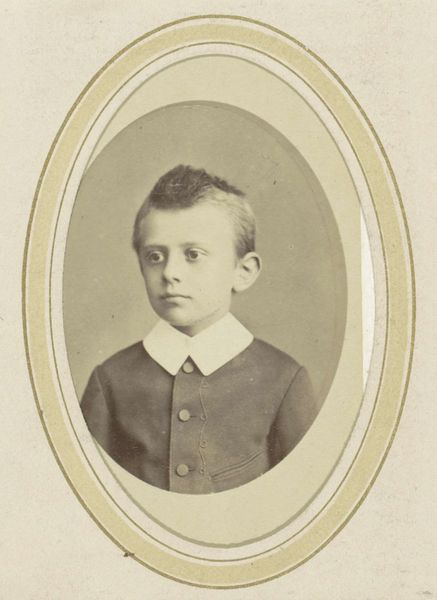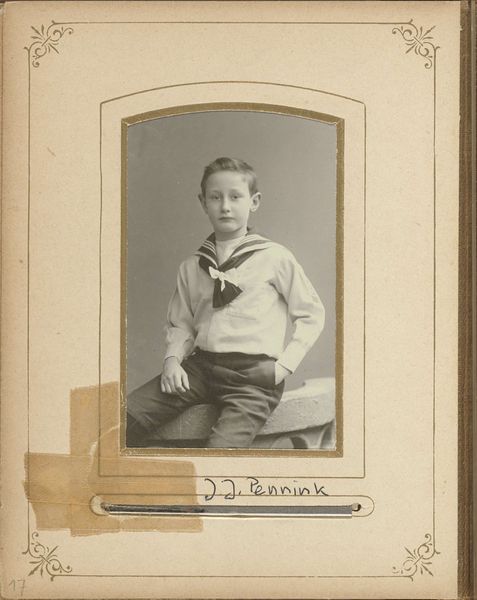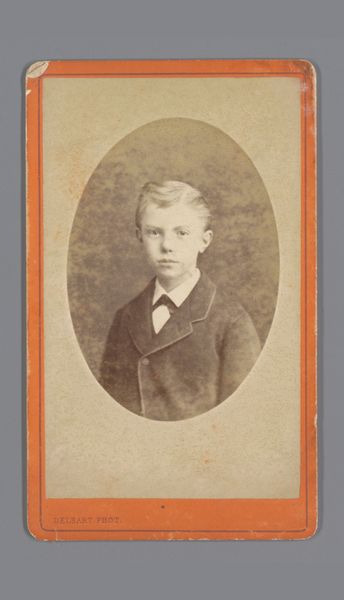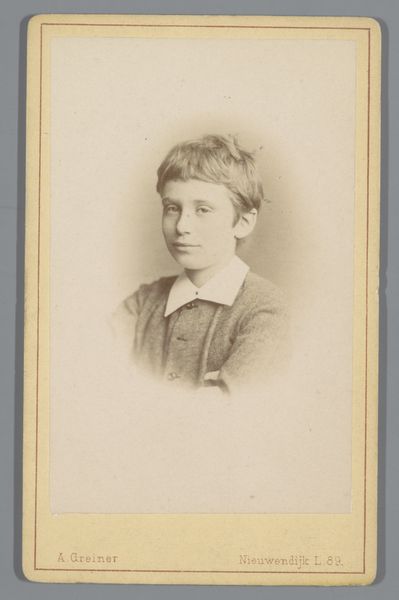
photography
#
portrait
#
photography
#
19th century
#
realism
Dimensions: height 84 mm, width 50 mm
Copyright: Rijks Museum: Open Domain
Editor: Here we have Albert Greiner’s “Portret van een jongen in matrozenpak,” taken sometime between 1883 and 1889. It’s a photograph of a young boy in a sailor suit, presented within what seems to be a page from a photo album. It's quite formal, a little austere. What can you tell me about this piece, particularly within its historical context? Curator: The photograph speaks volumes about the social rituals surrounding childhood in the late 19th century. Notice the sailor suit. This wasn't just children's wear; it was a specific style popularized by royal children, connecting the sitter to ideals of maritime power and national identity. How might such imagery have reinforced societal values? Editor: I hadn't thought about it that way, but it does seem to be implying that this child, by virtue of being dressed in that style, somehow embodies those ideals, at least symbolically. Curator: Precisely. Photography itself was becoming increasingly accessible, and portraits like this offered a means for families to publicly present their children within aspirational frameworks. It’s interesting to consider who was able to commission such portraits, and what roles these images played within domestic and broader public spheres. What kind of statement might these formal portraits make about status or aspirations? Editor: So it’s about more than just capturing an image of a child; it’s about carefully constructing an identity, using clothing and the act of portraiture itself to signal certain social values and perhaps class aspirations. This brings a completely different perspective on it. Curator: Exactly. These seemingly simple images are deeply entwined with complex socio-political forces, impacting our understanding and visual culture today. I hope looking at the image from this historical lens, gave you a richer understanding of the work. Editor: Absolutely, thank you for sharing that.
Comments
No comments
Be the first to comment and join the conversation on the ultimate creative platform.

